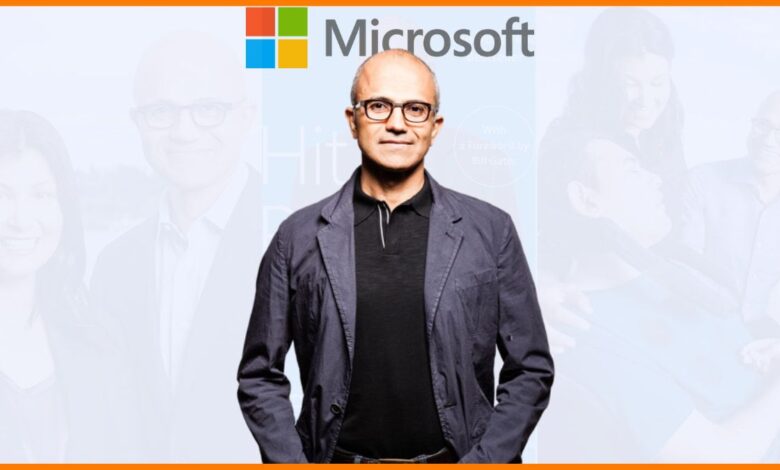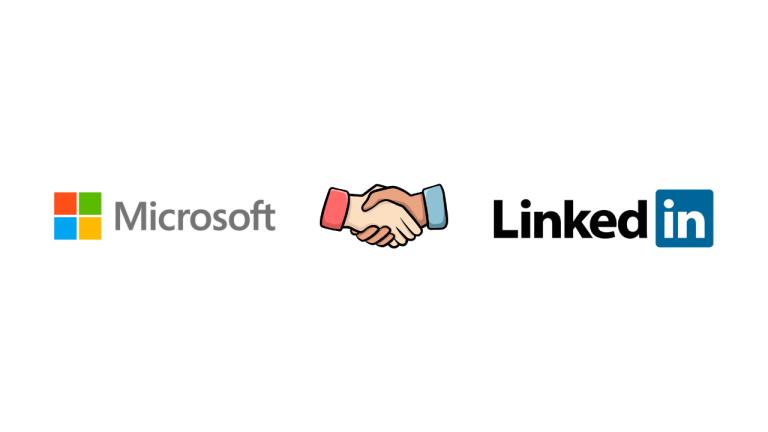
In recent years, Microsoft has cemented itself as one of the most valuable companies in the world, largely thanks to the strategic vision of its CEO, Satya Nadella. Under Nadella’s leadership, Microsoft has spent $170 billion on acquisitions, transforming the company’s portfolio in critical areas such as cloud computing, artificial intelligence (AI), and gaming. Using platforms like Dealogic, the financial world can track these moves, showcasing Microsoft’s strategic approach to mergers and acquisitions (M&A). Let’s explore how Nadella’s vision and Microsoft’s acquisitions have reshaped the tech giant.
Satya Nadella’s Leadership and Vision: Building Microsoft’s Future Through Acquisitions
Satya Nadella became Microsoft’s CEO in 2014, during a period of transformation for the company. Before Nadella, Microsoft was still seen primarily as a software company, known for its Windows operating system and Office suite. Nadella reimagined Microsoft’s potential, aiming to make it a leader in emerging fields such as cloud computing, AI, and gaming. His strategy involved buying key companies that could complement Microsoft’s growth goals and position the company at the forefront of technological innovation.
Shifting Focus to the Cloud and AI
One of Nadella’s earliest moves was a stronger push into cloud computing with Microsoft Azure. Recognizing the growing demand for cloud-based services, he made Azure the centerpiece of Microsoft’s business strategy, making it one of the top competitors to Amazon Web Services (AWS). Nadella also foresaw the potential in artificial intelligence and began acquiring companies that could bolster Microsoft’s AI capabilities.
Key Acquisitions Contributing to Microsoft’s $170B Spend Under Nadella: Game-Changing Investments

Over the past decade, Microsoft has made several high-profile acquisitions that have been crucial to its transformation. These acquisitions not only provided the company with new technologies but also gave Microsoft entry into new markets.
LinkedIn (2016, $26 Billion): Expanding Microsoft’s Reach in Professional Networks
In one of the largest acquisitions in tech history, Microsoft acquired LinkedIn, the world’s largest professional networking platform. This purchase allowed Microsoft to integrate LinkedIn with its Office 365 productivity tools and enhanced its presence in the business networking space. LinkedIn’s data, analytics, and AI tools have helped Microsoft strengthen its enterprise offerings, providing value to its corporate users and professionals.
GitHub (2018, $7.5 Billion): Empowering the Developer Community
By acquiring GitHub, Microsoft expanded its influence in the developer community, a crucial step in its broader technology strategy. GitHub, the world’s largest platform for open-source development, complements Microsoft’s vision of supporting software developers. With millions of developers relying on GitHub for collaboration and code sharing, this acquisition boosted Microsoft’s ability to attract talent and innovation to its Azure cloud ecosystem.
Nuance Communications (2021, $19.7 Billion): Revolutionizing AI in Healthcare
Nuance Communications brought AI and speech recognition technology to Microsoft, enhancing its presence in healthcare and artificial intelligence. Nuance’s voice recognition software is used in hospitals to transcribe medical records, making it a critical player in healthcare technology. This acquisition fits into Nadella’s vision of using AI to address real-world problems, particularly in industries like healthcare, where AI can streamline processes and improve patient care.
Activision Blizzard (2022, $68.7 Billion): Dominating the Gaming Industry
In its largest acquisition to date, Microsoft acquired Activision Blizzard, one of the biggest names in the gaming industry, known for franchises such as Call of Duty, World of Warcraft, and Overwatch. This acquisition significantly bolstered Microsoft’s Xbox gaming division, making it a leader in the gaming market. Microsoft’s move into gaming and interactive entertainment aligns with the future of immersive technologies like virtual reality (VR) and the metaverse.
How Dealogic Tracks Microsoft’s Acquisitions: The Role of Financial Data in Understanding M&A Strategies
To follow these large-scale acquisitions, platforms like Dealogic are invaluable for tracking and analyzing financial transactions. Dealogic is a financial technology company that provides data on M&A, equity capital markets (ECM), and debt capital markets (DCM).
Dealogic’s Value in Understanding Microsoft’s Strategic Moves
Dealogic helps analysts, investors, and corporations understand the significance of Microsoft’s M&A activities. By providing detailed reports on the timing, size, and nature of deals, it allows businesses to see how Microsoft compares with other tech giants like Google, Amazon, and Apple. This data also gives insight into how these acquisitions influence Microsoft’s stock market performance, helping stakeholders make informed decisions.
The Impact of Microsoft’s Acquisitions on Business Models: Expanding Cloud, AI, and Gaming
Microsoft’s acquisitions haven’t just been about expanding its technology portfolio; they’ve also been strategic moves to strengthen its core business areas—cloud computing, AI, and gaming.
Cloud Computing: Strengthening Azure’s Market Position
With cloud computing becoming the backbone of many industries, Microsoft’s focus on building its Azure platform has been crucial. The acquisitions of LinkedIn, GitHub, and various AI companies have played a significant role in growing Azure into a leading cloud service provider, competing with AWS and Google Cloud.
AI Integration Across Industries
Microsoft’s acquisition of Nuance is a prime example of how it’s embedding AI in specialized industries like healthcare. Additionally, Microsoft’s AI capabilities are becoming core features across its product lineup, including Office 365, Dynamics 365, and Azure AI services, enabling businesses to adopt AI with ease.
Gaming and Entertainment: Expanding Xbox and Beyond
By acquiring Activision Blizzard, Microsoft is positioning itself at the center of the fast-growing gaming market. The combination of Xbox Game Pass and Activision’s game library gives Microsoft a competitive edge, especially as cloud gaming and immersive gaming experiences gain popularity.
Microsoft’s Stock and Financial Performance: How Acquisitions Have Influenced Investor Confidence
Over the years, Microsoft’s strategic acquisitions have had a direct impact on its stock market performance. Since Nadella took over, Microsoft’s stock has experienced significant growth, driven by the success of its cloud services, AI innovations, and gaming business.
Stock Boosts from Key Acquisitions
Each major acquisition has been closely watched by investors, and many of them have boosted market confidence. For example, the LinkedIn and Activision Blizzard deals were met with positive reactions, as investors recognized the value these companies would bring to Microsoft’s overall portfolio. These moves have helped Microsoft become a trillion-dollar company and remain a strong performer in the tech stock market.
Microsoft vs. Competitors: Comparing Acquisition Strategies in the Tech Industry
When compared to other major tech companies, Microsoft’s acquisition strategy stands out due to its diversity and long-term vision. Companies like Amazon and Google have focused more on specific niches, while Microsoft has pursued a more well-rounded approach, making investments across a variety of fields like cloud, AI, enterprise, and gaming.
Diverse Portfolio vs. Specialized Acquisitions
While Amazon’s acquisitions have mostly centered around e-commerce and logistics (such as Whole Foods), Microsoft’s strategy has involved growing across multiple verticals. This diversification provides Microsoft with stability, ensuring that the company isn’t overly reliant on any single industry or market.
The Future of Microsoft’s Growth: What’s Next for Nadella’s Acquisition Strategy?
Looking ahead, Microsoft’s acquisition strategy shows no signs of slowing down. The tech giant is likely to continue investing in emerging technologies like quantum computing, AI, and the metaverse, all of which promise to shape the future of the digital world.
Potential Future Acquisitions
With quantum computing on the horizon, Microsoft is likely to invest in companies that will push the boundaries of what’s possible in this space. Furthermore, the metaverse—a virtual world blending real and digital spaces—could be the next frontier for Microsoft, especially given its strong gaming portfolio.
Conclusion: How Satya Nadella’s $170B Acquisition Strategy Transformed Microsoft
Satya Nadella’s $170 billion acquisition strategy has redefined Microsoft, transforming it from a legacy software company into a multi-faceted tech leader. Through smart acquisitions in cloud computing, AI, and gaming, Nadella has set Microsoft up for long-term growth and success. Platforms like Dealogic help track and analyze these deals, offering a deeper understanding of how these investments drive innovation and position Microsoft to remain competitive in the tech industry.
Also read: Discover BlogsterNation.com: Your Ultimate Resource Hub for Bloggers and Entrepreneurs




